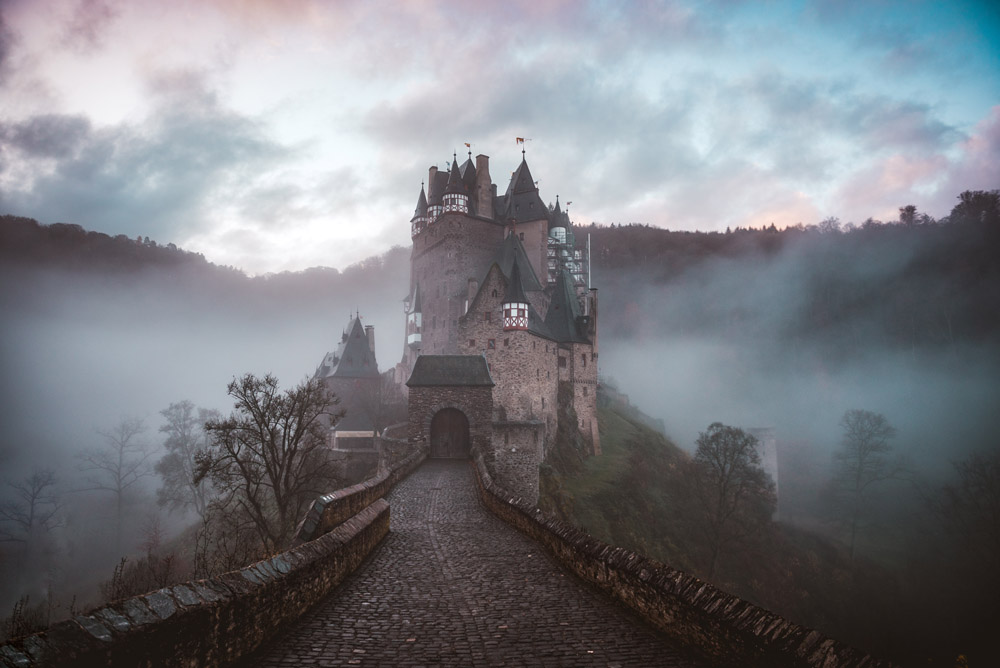October 20, 2019
The Meaning of Dracula’s Castle
Note: the following article on the meaning of Dracula’s castle is a modified excerpt from my article “Philosophical Idealism and Vision in Bram Stoker’s Dracula: Photographs, Sight, and Remote Viewing as Tools of Reality Rendering”. Word and Image: Theoretical and Methodological Approaches. Tampere, Finland: Tampere University Press, 2014.
Feel free to also take a look at my other academic publications.
The importance and meaning of Dracula’s castle in the novel becomes evident for a variety of reasons. In general temporal terms, the castle of Dracula serves as a generic reminder and connects with the Gothic tradition.
Examining the text itself, the novel essentially begins and ends with the castle. In fact, the novel ends in the castle twice: the first time in Mina’s last journal entry, describing the seeming destruction of Count Dracula in his home ground (D, 401) and the second in Jonathan Harker’s note, revealing their pilgrimage of sorts to the very same place seven years later (D, 402).

The Meaning of Dracula’s Castle: a Synecdochical Relation
This continual repetition is in accordance with the fact that despite the seeming ordered chronology of the novel, there is no real beginning and no real conclusion, only a cycle of events, a tangled hierarchy that perpetuates a causal chain.
As Jonathan and Dracula begin their nighttime discussions – for they always have to take place in the dark – the enigmatic Transylvanian Count talks about the special connection he shares with his castle, perhaps alluding to the importance of roots, introducing ethnical elements in the discourse.
He says, “to live in a new house would kill me. A house cannot be made habitable in a day” (D, 30), essentially revealing that he needs to travel in dirt, literally carrying his roots with him.
The castle of Dracula, much like the time that surrounds it and the Count, achieves character status in this part of the novel. The entire spatio-temporal continuum is thus distorted, underlining the uncanny feeling that the stability offered by modernity, or, indeed, by the Anglo-Saxon version of it, is a mere illusion (Thomas, 288-289):
[Jonathan] is as lost in time as he is in space, stranded uncomfortably in some uncharted territory between what he calls the “powers” of “the old centuries” and those of “modernity”. The young solicitor’s act of writing an “up-to-date with a vengeance” account of the bewildering events that transpire in this temporal and spatial limbo impresses upon him the consciousness of a profound historical dislocation, placing him squarely on the threshold of what might justifiably be called the post-Victorian.
It is, therefore, reasonable to underline the connection between Dracula and his castle, since the two seem to exist in a synecdochical relation, not only as a spatio-temporal no-man’s-land, but also as an actual metaphor of the fin de siècle itself.
The Meaning of Dracula’s Castle: Traditions of Depiction
It is also interesting to note that the appearance of both Dracula and castle seem to be serving as a concealment for something. Dracula’s old and frail appearance covers his supernatural powers, much like the dust in every corner of the castle “disguised in some measure the ravages of time and the moth” (D, 43), noting that the castle also keeps hidden other supernatural entities lurking behind its locked doors, namely the three female vampires.
The insistence of placing importance on visual depiction is, naturally, connected with the Gothic tradition. At the same time, it alludes to older ideas about morality and representation.
Vision as a Moral Act
In the Renaissance, knowledge was based on resemblance, and as a result, people found correspondences between the physical reality and moral or spiritual concepts, with the act of seeing considered not only a physical act, but also a moral one (Diehl, 191).
Philosophy has always been immensely interested in perception, and epistemological approaches to vision abound. Dracula “cannot possibly have his portrait painted or his studio photograph taken” (Hindle, viii), as he lacks visual representation.
Therefore, Jonathan’s seeing the Count over his shoulder although he cannot do so in the mirror (D, 32) could perhaps allude to moral responsibility. The implication is that Jonathan literally causes the Count to appear, hence exist, through his act of observation.
In this notion, the text entertains certain ideas about the nature of reality, and it appears to allude to certain kinds of philosophical idealism, which, in its most extreme form, would align with George Berkeley’s view that something has to be perceived in order to exist (Downing).
This approach is also in accordance with the notion that Count Dracula, or evil in general, has to be invited into the house or over any threshold, thus placing the moral responsibility in the hands of the individual. Similar examples abound in Gothic literature.
Note: to find/cite the article, use:
Angelis, Christos. “Philosophical Idealism and Vision in Bram Stoker’s Dracula: Photographs, Sight, and Remote Viewing as Tools of Reality Rendering”. Word and Image: Theoretical and Methodological Approaches. Tampere, Finland: Tampere University Press, 2014.
Works Cited
Diehl, Huston. 1983. “Horrid Image, Sorry Sight, Fatal Vision: The Visual Rhetoric of Macbeth”. Shakespeare Studies; Vol. 16.
Downing, Lisa. 2008. “George Berkeley”, The Stanford Encyclopedia of Philosophy (Winter 2008 Edition), Edward N. Zalta (ed.). Available from: <http://plato.stanford.edu/archives/win2008/entries/berkeley/>. [Accessed on June 7, 2019].
Hindle, Maurice. Introduction. Dracula. By Bram Stoker. London: Penguin, 2003.
Stoker, Bram. Dracula. London: Penguin, 2003. (Cited as D).
Thomas, Ronald R. 2000. “Specters of the Novel: Dracula and the Cinematic Afterlife of the Victorian Novel”. Kucich, John & Sadoff, Dianne F. (ed. and introduction). Victorian Afterlife: Postmodern Culture Rewrites the Nineteenth Century. Minneapolis, MN, USA: University of Minnesota Press.
I don't show you ads or newsletter pop-ups; everything is offered for free. Wanna help support a human internet?
